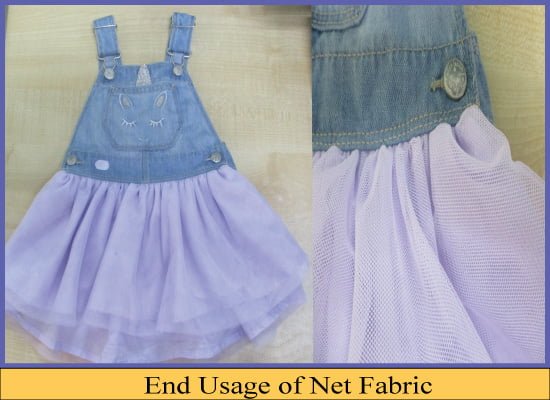Needle Punching Method for Nonwoven
Last updated on September 7th, 2023 at 12:47 am
Needle-punched fabrics produced with a modified needle bed and needles that penetrate beyond the surface to form loops on the back can be made to resemble loop pile, velour, or velveteen. The loops either are left uncut or are cut and brushed to give the surface appearance of the pile-woven fabric.
Mechanical bonding is the oldest method of producing non-woven; it entangles fibres to impart strength to dry-laid webs. The most common mechanical methods are needle punching, spun lacing, also called hydroentangling and stitch bonding. The needle punching method is described below –
You may like also: The Needle – The Heart of Knitting
In needle punching, barbed needles are punched vertically through the web to hook and entangled tufts of fibres. Needle-punched non-woven resemble felt in appearance, but they are made primarily from fibres other than wool. Characterized by high density combined with some bulk, they are available in weights from 50 to 285 grams (1.7 to 10 oz) and in thickness from 15 to 160 mils.
Two basic steps are involved in the construction of needle-punching non-woven:
- The fibre web, or butt, prepared by carding, garnering, or air-laying techniques is fed into a machine with specially designed needles.
- The fibre web moves on a substrate between a metal bedplate and a stripper plate; the needles punch through the plates and the fibre web, reorienting the fibres so that mechanical interlocking or bonding occurs among the individual fibres.

The substrate may be filaments, a scrim, or some other form. Placement of the substrate in the middle of the fibre web improves the finished needle-punched fabric’s strength and structural integrity.
The strength of needle-punched fabrics also depends on the fibre arrangement within the webs.
If fibres are placed parallel to each other, the finished fabric will have good strength in that direction but will tend to be weak in the opposite direction. If the fibres are in a random arrangement, strength is equal in all directions. A two-step process first tacks the web with 30 to 60 punches per square inch (4.7 to 9.3 per square cm) and then punches with 800 to more than 2500 penetrations per square inch (125 to 390 per square cm). A higher number of punches is used for fabrics such as blankets, which are expected to be subjected to considerable handling during use and care.
Properties
The properties of needle-punched fabrics depend on the length and characteristics of the fibres, the physical properties of the web, and the techniques used to produce the web. Most needled fabrics lack any structural pattern because the needles punch and intermingle the fibres in such a random way that the fabric on the surface appears uniform.
Uses
Needle-punched fabrics frequently are found in carpeting and other floor coverings, wall coverings, blankets, padding material, insulation materials, and industrial fabrics for vehicles.
You may also like: Nonwoven Fabrics: An Overview




Loving the info on this internet site , you have done outstanding job on the posts .
It’s difficult to get knowledgeable individuals on this topic, however you seem like there’s more you’re discussing! Thanks
Textile Apex delivers a comprehensive guide on needle punching in nonwoven production. Clear explanations and insightful details make it a valuable resource for anyone in the textile industry.